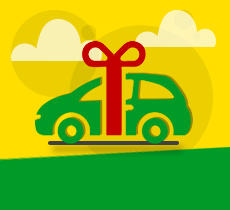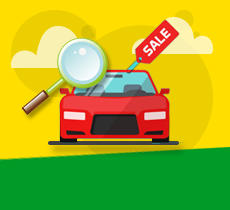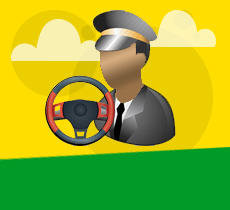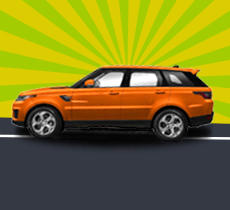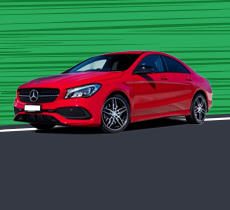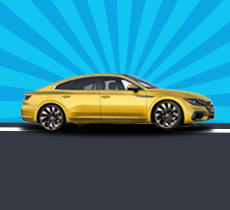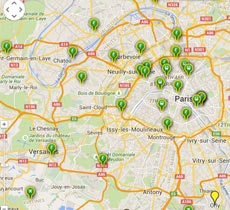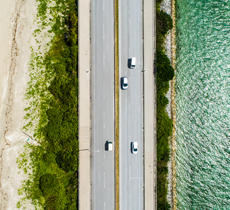Guidance in Case of an Accident
If you are involved in an accident you must do the following:
- Do not move a victim unless the situation demands so be careful not to aggravate the injury. For example, moving a victim can cause more harm if they have a spinal or neck injury or are bleeding excessively.
- If anyone is hurt and requires an ambulance, dial 999 and an operator will assist you.
- Only administer first aid if you are qualified to do so notify the police immediately, and be honest when providing accident details.
- If in an accident where both vehicles can be driven, they should be moved to the side of the road to avoid holding up traffic.
- The traffic police will arrive, evaluate the crash and fill out the Accident Form.
- A copy of the Accident Form will be given to both individuals involved in the crash. You will need to take the form to your insurance company to proceed with vehicle repair.
Speed Limit Compliance
Speeding not only endangers your life but the lives of other road users as well. More than 60 per cent of road crash fatalities and injuries are caused by excessive speeding. The maximum speed limits on various roads are shown in Red Circle signs posted along the road, as indicated below.
- Do not drive at more than the posted speed limits
- Reduce your normal driving speed in traffic congestions or bad weather conditions
- Slow down while passing through areas such as schools, work zones and residential blocks
Driving in Bad (foggy) Weather
Drive Cautiously During Sandstorms or Foggy Conditions
Bad weather conditions such as fog and sandstorms reduces visibility and sometimes makes the road slippery thereby increasing the risk of accidents.
Guidance
If possible, postpone your trip until the weather conditions improve.
- Try and start your trip earlier to drive calmly in bad weather.
- While entering a fog-affected area, reduce your speed gradually.
- If the fog is too dense, pull completely off the road and turn on hazard (emergency) lights while your vehicle is parked safely.
- Always use low beam headlights; turn on fog lights if available to increase visibility.
- Use wipers and defrosters as necessary for maximum visibility.
Driving at Night
Drive Cautiously at Night
Due to diminished visibility, driving at nights poses a higher risk for accidents. So be extra careful on the road.
Guidance
- Always turn on headlights while driving at night.
- Ensure that you only use low beam headlights, and high beam headlights only when necessary.
- Pedestrians and cyclists wearing dark clothes are much harder to see at night, therefore, drive slowly to avoid accidents.
- Make sure the windshield and window glasses are clean for night driving.
Use of a Mobile Phone
Do Not Use a Mobile Phone while Driving
Using a mobile phone while driving can distract a driver and cause them to make mistakes that can result in serious or even fatal crashes. Using a mobile phone or a similar device while driving increases the probability of an accident by 4 times.
Guidance:
- Use hands-free devices to accept your calls while driving ; however using hands free kits do not make drivers safer.
- If possible,switch off your mobile phone while driving or at least put it on silent mode.
- Always remeber:No telephone call is more important than life.
Driving through Work Zones
Driving Cautiously through Work Zones
Work zones are defined as any roadway or utility construction, or maintenance or repair works occurring within or near a road right of way. Generally, temporary roadways are provided in work zones where drivers are expected to drive more carefully.
Guidance
- Always slow down while driving through a work zone.
- Always follow the posted work zone speed limits and try to maintain a consistent speed with the traffic flow.
- You should comply with the signs provided in the work zones and follow the instructions of the traffic coordinators at work zones.
- Be patient; work zone delays can be frustrating, but it only takes a few additional minutes to get by.
- Always be alert, as workers and heavy equipment may only be a few metres from passing vehicles.
Guidance about Parking
Paid Parking System in Abu Dhabi
In order to address the growing demand for parking and to prevent the misuse of limited parking spaces, the Abu Dhabi Department of Transport has implemented a sustainable parking management solution called MAWAQiF. MAWAQiF manages and regulates parking services in Abu Dhabi.
Guidance
- A sign indicating paid parking zones and the paid parking hours are put up at the entrance of all parking areas.
- Parking areas are classified into two categories—Premium and Standard parking.
- The Standard parking areas are identified by the turquoise and black curb stones, and the Premium parking areas by the turquoise and white curb stones. A sign board is also posted at each parking location that provides the following information:
- This is a paid parking area.
- The yellow and black curb stones mean ‘No parking for 24 hours’, which means this is a no parking zone.
- Standard parking zone.
- Premium parking zone.
- Paid parking hours are from 8 am to midnight, after which parking is free in the parking zone.
| Standard Parking | Premium Parking |
| 24 hours | 4 hours |
| AED 2 per hour or AED 15 per day | AED 3 per hour |



